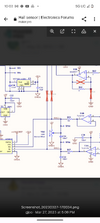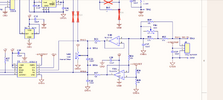How do you calculate Dc bias in this circuit. VR2 is a potentiometer from O-100k resistance. But, how does the 100 ohm resistor on the output of the op amp play into calculating how much dc bias adds to that op amp output before it's fed to the adc. Wouldn't the potentiometer be ineffective at most settings?


